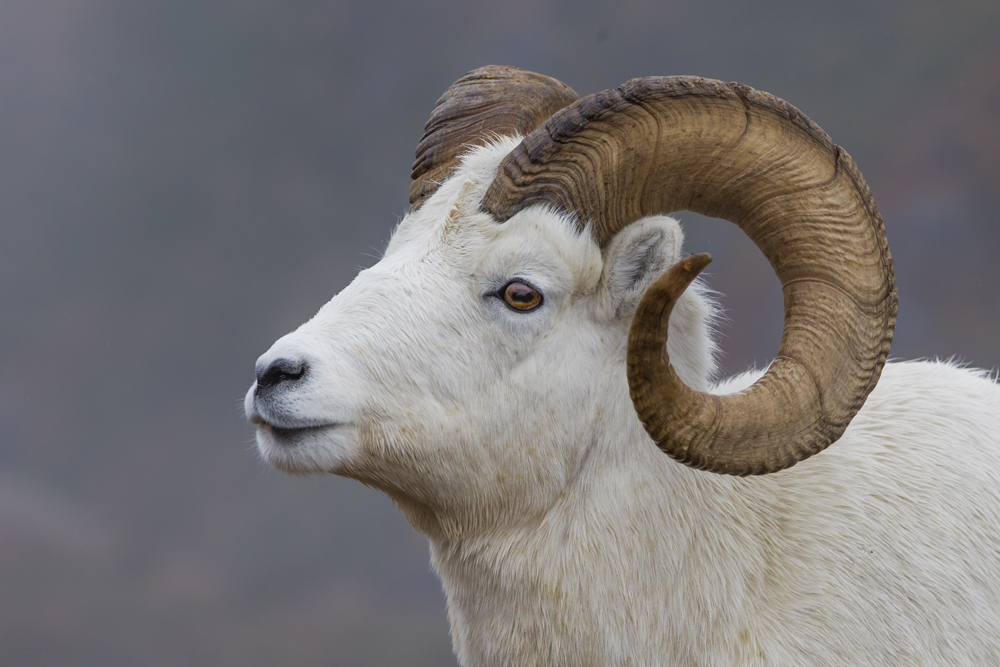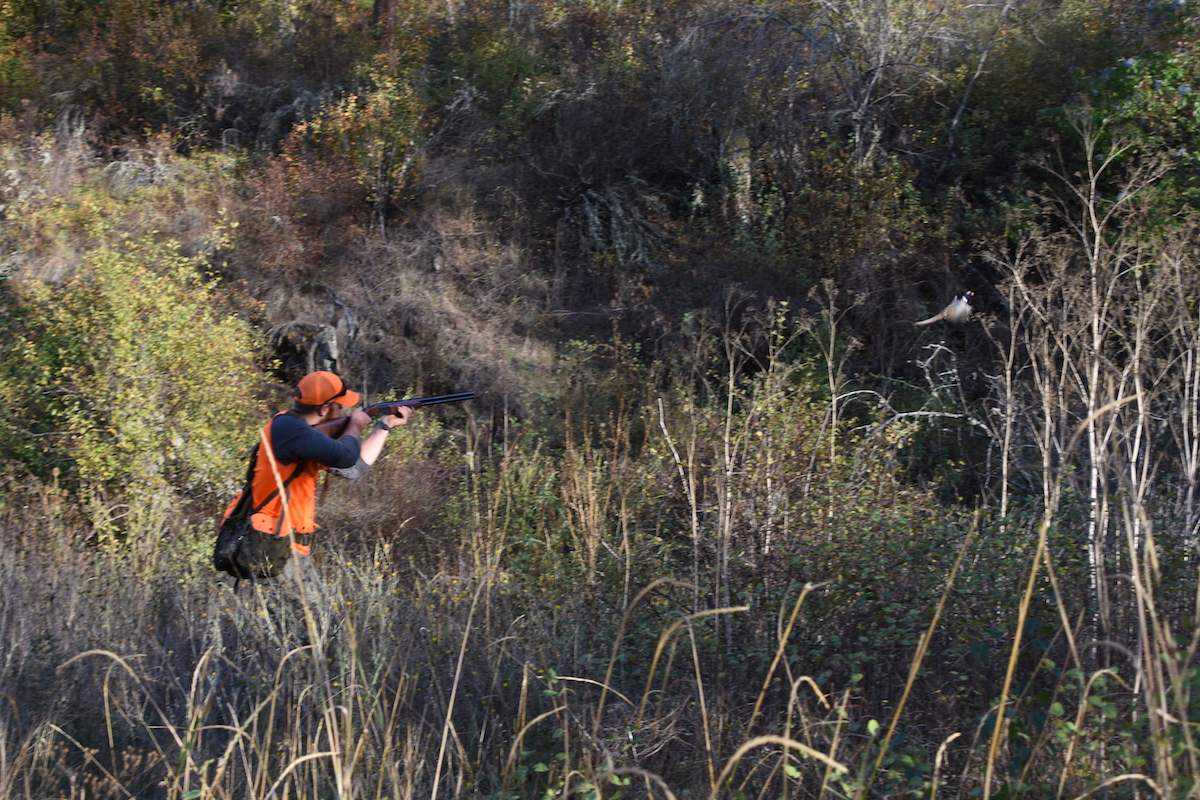We rose late to find the sun brightly shining. Rungius soon started to look after his caribou carcass; Osgood and Gage went to get the meat of Osgood’s ram. I stood near the fire for a few minutes after they had left and was gazing at the high mountains three miles or more distant, where I intended to hunt, when I saw up near the top what appeared to be sheep—whitish spots against the dark background of the slope. My glasses showed six sheep, not clearly visible, but looking like rams.
It was a little after midday, and in five minutes I had started down the creek, flushing ptarmigan and disturbing ground squirrels on the way, while red spruce squirrels scampered and frisked about. After passing rapidly along the well-beaten moose trail until near the forks, I again looked through the glasses. Yes, they were rams—nine in all, apparently, with fair horns. The horns of one, which was feeding to the right a short distance from the others, seemed to be particularly large.
They were on the west face of a high, rugged mountain about a mile broad with very steep, green slopes extending from the creek directly up to near the crest, ending against jagged precipices, pinnacled above by high peaks of limestone and iron-stained rock, which, under the sunlight, displayed a wonderful harmony of colors—red, black, and white. The slope was furrowed by three ravines, and through the bottom of each fell brooks, dashing and leaping over the rocks of the steep decline. From a distance these ravines looked like deep, concave depressions, giving a wavy appearance to the broad mountain face.
Three of the rams, including the one with big horns, were feeding in the middle ravine; the other six were standing on the edge of the next one, which was so precipitous that it was more like a deep canyon on the mountain side. In studying an approach, it appeared to be quite possible to climb out of sight in the ravine to the right, but should the rams in the meanwhile feed in that direction, they would surely see me.
Though it required more time, I decided to pass clear around the mountain, and by winding up the southeast side come in sight above them, thus avoiding any possibility of their seeing me unless they should go back over the crest, which for the next few hours was unlikely. I waded the creek, circled, and began the ascent through the timber. Coming out on the south side and circling upward, I not only found it very steep, but it was extremely difficult to force my way through the dense growth of dwarf birch that covered the lower slopes of the south exposure.
Gradually winding upward, I reached a point high above the sheep where the ground was so rough and steep that it was difficult to work among the crags and rocks to the part of the crest that I had marked from below as directly above the sheep. The slope now became so dangerous that it was necessary to sling my rifle on my back so I could use both hands. At length I stood at the marked point, just below the crest, and paused a while to rest and recover my breath after the exertion of the climb.
After a few moments I slowly crawled forward and looked over. There, 150 yards below me, was the the large ram lying down near the edge of the second ravine. A little to the left below it the heads of two smaller ones were just visible. The wind was fresh and fairly strong, blowing directly from me to them. As no other sheep were in sight, I concluded that the rest were below in the ravine. The ram was peacefully looking down on that wondrous landscape without suspicion of danger from above. Sitting with my elbows squarely on my knees, I fired at the center of its body. I heard the bullet strike him before he rose with a jump and stepped forward, quickly passing out of sight over the edge of the ravine.
The two smaller rams sprang to a standing position and looked sideways and down, apparently not much alarmed. None of the others appeared while I remained stretched at full length, motionless, for ten minutes. The big ram then suddenly staggered in sight again on the edge of the ravine; I aimed, fired, and struck him in such a way that I was confident he had been killed as he ran back into the canyon, where I later found him.
After the excitement of the hunt, the vast panorama of mountains about me never seemed so beautiful. Directly below were the bare, steep slopes extending to the timber that bordered the creek. Beyond lay the valley of the west fork, fringed green by the spruces, while the waters of the creek were shining and glistening in the rays of the setting sun, which tinted with gold the heavy clouds on the horizon. The lofty mountain behind camp stood out boldly, its high-turreted rocks and rough peaks forming fantastic shapes against the skyline. At its base our campfire burned brightly. Behind, stretching far away, were the bewildering masses of the main Ogilvie ranges, the varied rocks blending their colors and fading like a wavy ocean merging into the soft, dull blue of the sky beyond.
Still with me is the vivid memory of those wild sheep rushing across the rocky slope in that wonderful landscape.
An excerpt from The Wilderness of the Upper Yukon.




